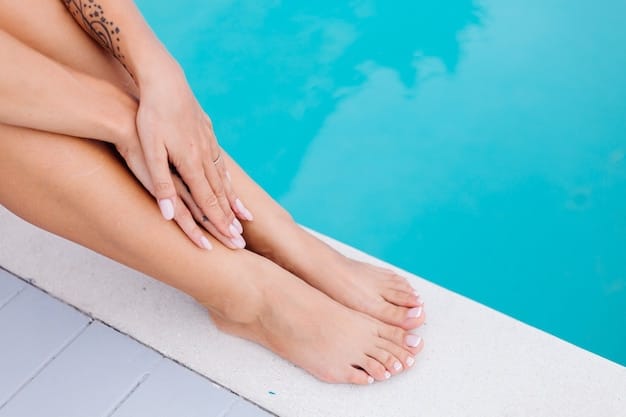
Your feet and legs are crucial for your overall health and comfort. Taking good care of them with regular pedicures is a great idea, but how often should you get one?
Generally, it’s recommended to get a pedicure every 4 to 6 weeks. This time frame allows for regular upkeep and keeps your feet and nails in good shape. However, the frequency of your pedicures will ultimately depend on your preferences, lifestyle, and personal nail care needs.
Is It Important To Get Pedicures?
Yes, pedicures are beneficial in many ways. They help maintain foot health by managing overgrown toenails, rough skin, calluses, and ingrown nails. Pedicures also make your feet look better and give you a self-confidence boost, along with the relaxation that comes with self-care. Additionally, they can prevent foot odor and fungal infections, making them a valuable part of your grooming routine.
Signs That You Need To Get A Pedicure
Here are some signs indicating it’s time for a pedicure:
1. Overgrown toenails – When your toenails grow too long, it’s time for a trim to avoid discomfort.
2. Rough or dry skin – Pedicures can remove dead skin, softening your feet.
3. Developing calluses or corns – These can be unsightly and uncomfortable, but a pedicure can take care of them.
4. Ingrown toenails – Painful and potentially infected, these need professional attention.
5. Yellowed or discolored nails – A sign of possible fungal infection that a pedicure can help address.
6. Foot odor – Regular pedicures help manage bacteria and fungi, reducing odor.
7. Brittle or split nails – Pedicures can strengthen and improve your nails.
8. Unkempt appearance – A pedicure can rejuvenate and make your feet look well-maintained.
9. Special occasions – Ensure your feet look their best for events where you’ll wear open-toed shoes.
10. Craving for self-care – Sometimes, you just need the relaxation of a pedicure.
Benefits of Getting Pedicures Regularly
Regular pedicures offer numerous benefits:
– Maintain foot health by addressing issues like overgrown toenails and calluses.
– Moisturizing treatments keep skin soft and hydrated, preventing dryness.
– Exfoliation removes dead skin cells, leaving feet smooth.
– Massages during pedicures improve blood circulation, reducing swelling and promoting relaxation.
– Proper trimming prevents ingrown nails.
– Cleaning and disinfecting reduce the risk of fungal infections.
– Improved appearance boosts self-confidence.
– Stress relief through relaxation and pampering.
– Helps in managing foot odor.
– Keeps feet looking good for special events.
– Provides a break from stress and contributes to overall well-being.
Dangers of Getting Excessive Pedicures
Though beneficial, pedicures can pose risks if overdone:
1. Overexposure to chemicals can cause skin irritation or allergic reactions.
2. Frequent polishing can weaken toenails.
3. Aggressive exfoliation or cuticle removal can lead to infections.
4. Frequent salon visits can be expensive.
5. Continuous use of nail enhancements without breaks can weaken nails.
6. Chemicals from pedicures can increase skin sensitivity and irritation.
How Long Does The Effect Of Pedicure Last?
The effects of a pedicure typically last between 2 to 4 weeks, depending on individual factors and treatments received. Regular foot care at home can extend these benefits.
Frequently Asked Questions
– How long should you wait between pedicures?
Around 4 to 6 weeks, depending on your personal needs.
– How often should you do a pedicure at home?
Every 2 to 4 weeks to keep up with grooming and foot care.
– Is it good to get pedicures regularly?
Yes, they improve both foot health and overall well-being.
Wrapping Up
The frequency of your pedicures primarily depends on your preferences and signals from your feet like calluses, foot odor, or dry skin. While regular pedicures are beneficial, it’s essential to avoid overdoing them to prevent exposure to chemicals and nail damage. Balancing maintenance and personal care is key for healthy, attractive feet.